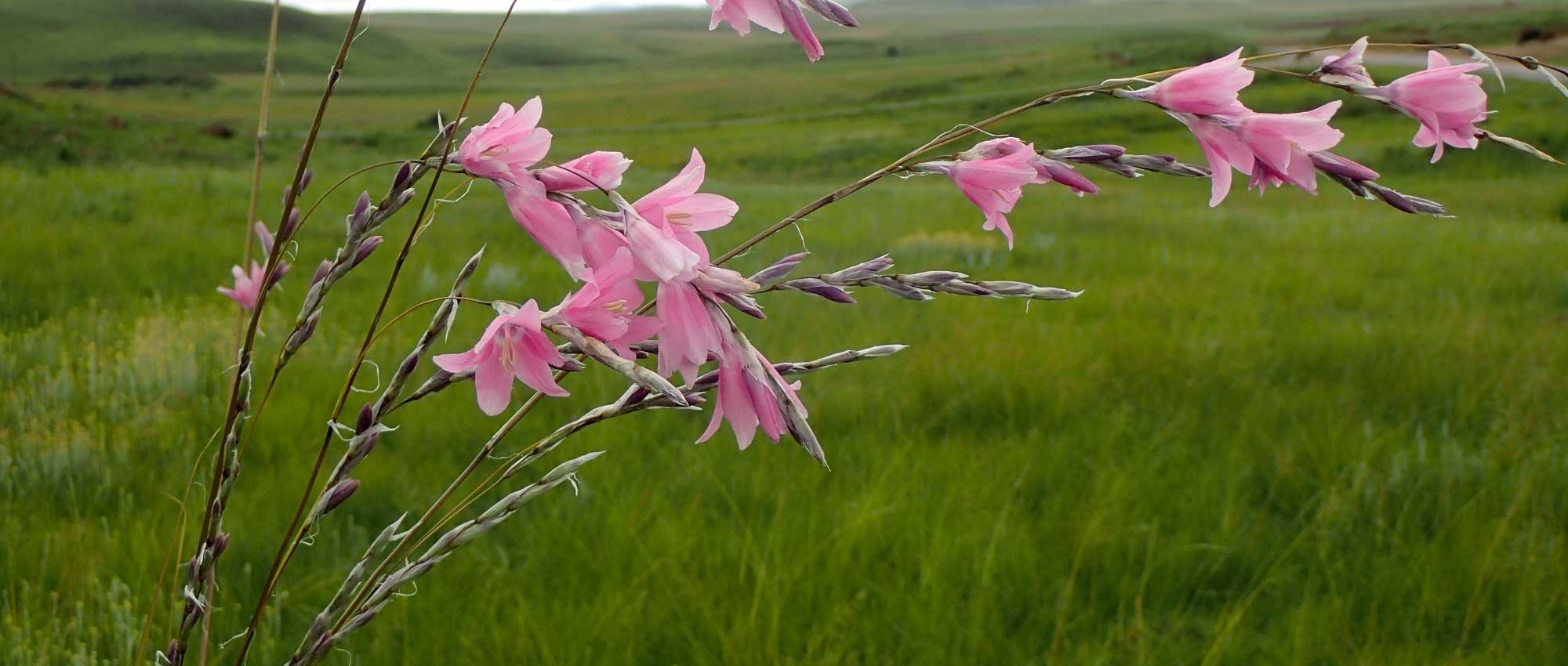
Dierama, angel's fishing rod: planting, growing and care
Summary
Dierama in a nutshell
- Dierama is appreciated for its graceful habit, bearing flowers at the tips of long arching stems
- It offers long summer flowering, with flared bell-shaped flowers and superb, fine evergreen foliage.
- Flower colours range from white to deep purple, including a whole spectrum of pinks (soft pink, deep pink, salmon pink…)
- These are perennials that thrive in sun, in cool, well-drained soil
A word from our expert
Dierama is a superb perennial, very graceful, charmingly nicknamed ‘Angel’s fishing rod’, a name it lives up to! It is prized for its summer flowering: it then produces long arching stems at the ends of which hang delicate bell-shaped flowers, often pink. It also bears attractive grey‑green linear foliage, similar to that of grasses.
Most widespread is Dierama pulcherrimum, valued for its pink bell-shaped flowers. There are also various horticultural varieties, selected by breeders, that produce flowers in other shades. They can, for example, be white, as in variety ‘Guinevere’, or purple, as in Dierama ‘Blackbird’ or ‘Merlin’.
Plant Dierama in spring, in full sun, in fertile, light, cool, well-draining soil. These plants take a long time to establish, but once well settled they reward with their graceful, very delicate summer flowering. It is important that substrate remains relatively cool in summer… otherwise, don’t hesitate to water occasionally! Dierama are somewhat tender and will benefit from protection against cold in winter. They can be multiplied by division or by sowing.
Dierama is a superb perennial still too little known and grown! It is an original plant that resembles no other. It has the advantage of lightening borders, bringing a soft, delicate touch. It fits easily into romantic borders, in mixed-border schemes, or on pond edges… even in a cool rockery. Dierama combine very well with grasses, which also have loose, airy forms.
Description and botany
Botanical data sheet
- Latin name Dierama sp.
- Family Iridaceae
- Common names Angel's Fishing Rod, Dierama
- Flowering from June–July to September
- Height usually between 60 cm and 1.50 m
- Sun exposure full sun
- Soil type fresh, rich, well-draining
- Hardiness between -8 and -12 °C
Dierama are evergreen perennial plants that form clumps of fine leaves from which long, flexible, arching flower stems arise. There are 44 species. The species most commonly grown in gardens is Dierama pulcherrimum. Dierama pendulum and Dierama igneum are also sometimes cultivated, as well as numerous horticultural varieties. Dierama are native to East and South Africa: from the Cape region of South Africa up to Ethiopia. Greatest species diversity is observed in KwaZulu-Natal in South Africa, notably in mountainous areas. They are mainly found in wet meadows or rocky meadows, depending on species. They grow in open habitats, which explains their preference for full sun.
Dierama belong to family Iridaceae (2,300 species), such as irises, gladioli, crocuses and freesias. These are mostly herbaceous plants, often with underground storage organs (corms, bulbs, fleshy roots, rootstocks…). They are also monocotyledonous, generally bearing linear leaves with parallel veins and flowers with three sepals and three petals.
Dierama are poetically nicknamed “Angel’s Fishing Rod”. In English, Dierama are called “Angel’s Fishing Rod” (same meaning) or “Fairybells”, referring to the plant’s fairy-like appearance. In Latin, the genus name comes from Greek Dierama, meaning “funnel”, alluding to flower shape. Specific epithet pulcherrimum means “very beautiful, superb” in Latin. Name pendulum refers to flowers that hang from stem tips.
Dierama stand out by their very elegant silhouette. They form a clump of fine, upright leaves, resembling a tussock of grasses. From this emerge long flower stems, initially erect then trailing.
Dierama measure between 60 cm and 1.50 m, up to 2 m for the tallest. Conversely, Dierama trichorhizum is smaller, only 40–60 cm high. Generally, leaf clumps rarely exceed 60–80 cm in height; Dierama really gain height when flower stems appear.
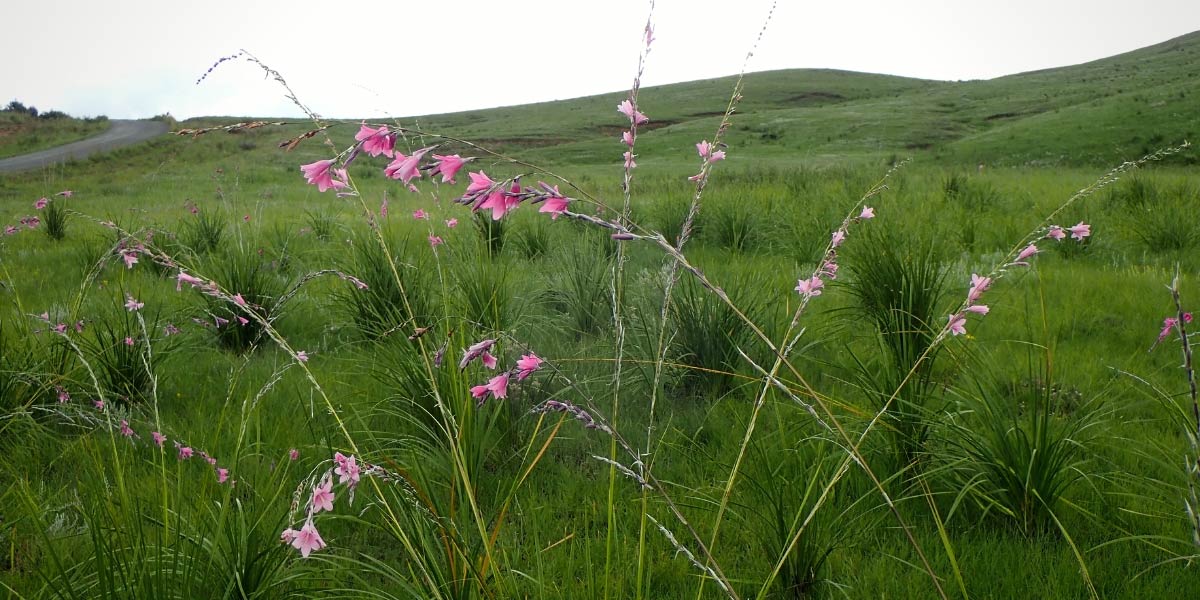
Dierama observed in nature in South Africa
Dierama develop slowly; they need time to establish and grow. When raised from seed, they take several years before beginning to flower. Patience is rewarded by refined flowering. Over time, Dierama can form dense clumps. It is best not to disturb them and to leave them in place for several years.
Like gladioli, crocosmias or crocuses, which also belong to family Iridaceae, Dierama produce stems and foliage from corms: underground storage organs resembling bulbs. These consist of a swollen stem that contains nutrient reserves. Dierama corms are rounded and flattened, wrapped in external fibrous layers (tunicate). They are renewed each year: new corms develop above old ones, while old ones remain in place for years, creating chains of stacked corms, as in Crocosmias.
Flowering takes place in summer, between June–July and September, depending on variety, and has the advantage of lasting a long time. Long, thin, very flexible flower stems then emerge from the leaf clump. They are first erect, then naturally curve under the weight of the flowers. This erect-then-arching form gives them the name “angel’s fishing rod” (especially as these plants often grow in damp places at pond or stream edges). Flowers really look suspended, as if hanging on a thread. They have a graceful, fairy-like appearance. Because of stem flexibility, flower stems sway in the wind, adding movement to the garden.
Flowering is a panicle made up of several small spikes of flowers. These are elongated, bell-shaped and pendulous. They measure between 3 and 6 cm in length. They consist of six coloured tepals (petals and sepals of similar shape and colour), and are surrounded by dry, membranous bracts.
Species-typical flowers of Dierama pulcherrimum are a lovely soft pink. Many varieties exist, ranging from pale pink and even white (Dierama ‘Guinevere’) to deep purple (Dierama ‘Merlin’ or ‘Blackbird’), almost black, with many shades of pink in between. Dierama igneum has salmon-pink flowers. Sometimes Dierama flowering leans towards red, burgundy or orange. Some species have pale yellow flowers, such as Dierama pallidum, and there is even a bluish-flowered variety: Dierama ‘Blue Belles’. These hues remain relatively rare in cultivated Dierama, most having pink flowers.
Dierama flowering is generally quite luminous. Colours can be soft, pastel, or more pronounced, but always delicate and refined. When flowers are soft pink, Dierama fit perfectly in romantic gardens. White-flowering forms have a sober, chic appearance, very elegant, ideal for modern, graphic gardens.

Although most Dierama have pink flowers, some display other shades: Dierama ‘Guinevere’, Dierama igneum (photo Peganum), Dierama ‘Blackberry Bells’ and Dierama ‘Blue Belle’
They are also melliferous plants, appreciated by pollinating insects, especially bees. Flowers contain nectar, which insects feed on while transporting pollen from one flower to another.
Leaves are long, narrow and erect, resembling grass leaves, which makes them easy to combine with grasses. Leaves lack a distinct central vein, instead showing longitudinal, parallel veins. They measure between 50 and 90 cm in length. Leaves also display a pleasant green tone, sometimes slightly greyish. Leaf form is typical of monocotyledonous plants: long and narrow, linear, with parallel veins.
Foliage is evergreen, so it remains in place over winter. Plant lacks a true dormancy period (unlike some bulbous or cormous plants that can be lifted and stored dry for winter). It is semi-dormant in winter and can do without water, but stays in place to resume growth in spring and flower in summer.

Dierama form beautiful clumps of long, narrow, graphic leaves
After flowering, Dierama produce hard, spherical capsules. These contain many small, brown, angular seeds that require winter cold to germinate. Seeds can be harvested to propagate the plant. Dierama can also self-seed in the garden. Seedlings from sowing, however, will take several years before flowering.
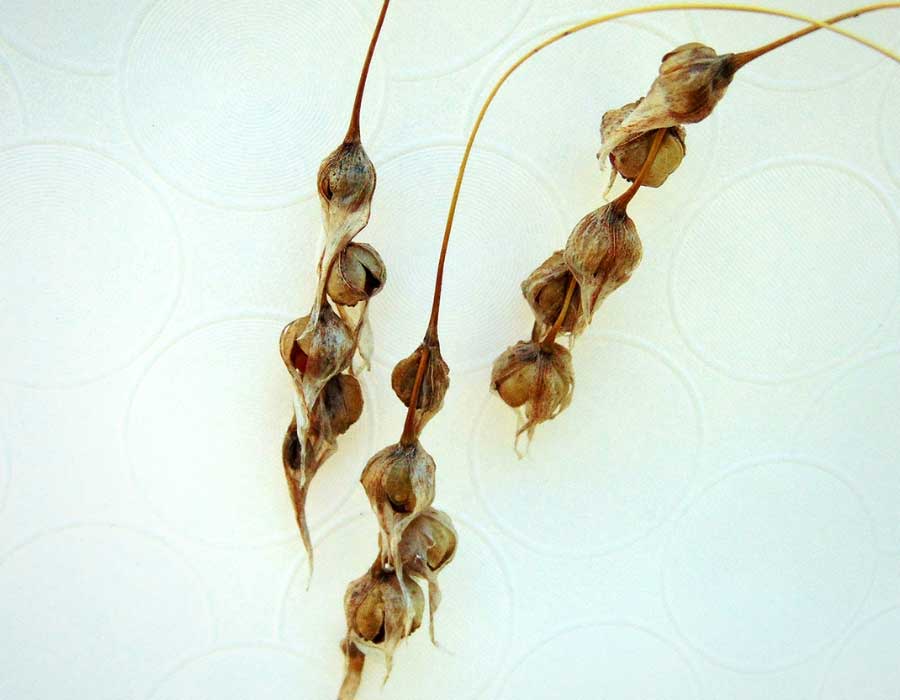
Dierama fruits (capsules) containing seeds
You may also read
Epimedium, barrenwort: planting, growing and careMain varieties
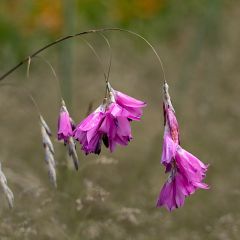
Dierama pulcherrimum
- Flowering time august to october
- Height at maturity 1 m
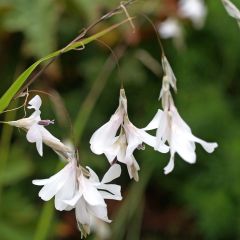
Dierama Guinevere
- Flowering time august to october
- Height at maturity 1,10 m
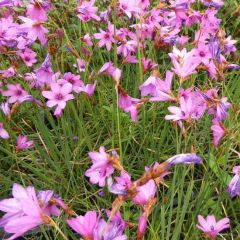
Dierama trichorhizum
- Flowering time july to september
- Height at maturity 40 cm
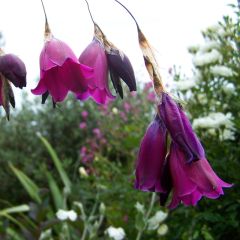
Dierama pendulum var. robustum Blackberry Bells
- Flowering time august to october
- Height at maturity 1 m
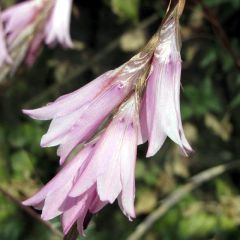
Dierama erectum Pink Rocket
- Flowering time september, october
- Height at maturity 75 cm
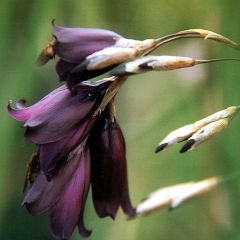
Dierama pulcherrimum Merlin
- Flowering time august, september
- Height at maturity 1 m
Other varieties to discover
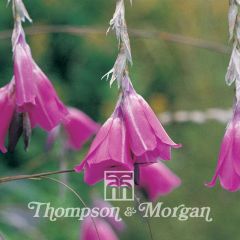
Dierama pulcherrima Slieve Donard Hybrids - Angels fishing rod seeds
- Flowering time july to september
- Height at maturity 1,20 m
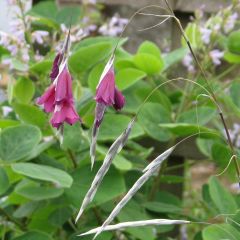
Dierama pulcherrimum Blackbird
- Flowering time august to october
- Height at maturity 1,20 m
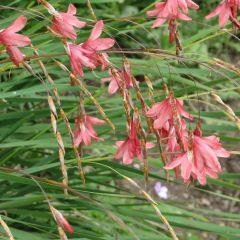
Dierama igneum
- Flowering time july to september
- Height at maturity 60 cm
Discover other Dierama
View All →Available in 0 sizes
Available in 1 sizes
Available in 1 sizes
Available in 2 sizes
Available in 1 sizes
Available in 1 sizes
Available in 1 sizes
Available in 1 sizes
Available in 1 sizes
Planting Dierama
Where to plant?
Dierama thrive in full sun. They need plenty of light. As Dierama are somewhat frost‑tender, choose a situation sheltered from cold winds if possible.
In the wild, Dierama grow, among other places, in wet or marshy meadows. They will appreciate being planted in fresh, even moist, soil. You can quite happily place them on the banks of a pond. In any case, it is important that the soil does not dry out in spring and summer. They also appreciate fertile, humus-bearing soils. You can therefore add some compost (when planting, then during cultivation) to enrich the soil. They also like light, loose, deep soils. The substrate must be well‑draining and permeable, so water can infiltrate deeply rather than remain at the surface. Waterlogging in winter could rot the corms. Dierama also prefer slightly acidic or neutral soils, but do not like strongly calcareous substrates.
Dierama can be planted in a mixed border, behind lower plants. They help lighten borders and add volume. They are also perfect in a moist rockery. As Dierama are fairly tall plants with a very graceful habit, you can place them as a specimen, for example on a short grass meadow, to really show them off.
You can also plant them in a pot. However, you will need to be more vigilant about preventing the growing medium from drying out, watering more regularly than in the ground. If you live in a cold region, pot planting is a very good solution to enable easy overwintering by placing the plant under cover as soon as temperatures fall.
They are well suited to coastal gardens, as they enjoy mild temperatures (they are a little frost‑tender) and tolerate sea spray. In addition, wind creates beautiful effects as it sets the bell‑shaped flowers in motion.
We recommend choosing the planting spot carefully, once in place they prefer not to be disturbed. They grow slowly and need time to establish well.
When to plant?
Dierama are planted in spring (April–May), when the soil has warmed and temperatures become milder. The most important thing is to avoid periods of frost or extreme heat.
How to plant?
For planting in open ground, with Dierama in a pot or bucket:
- Place the root ball in a basin filled with water. This rehydrates it, helping establishment and subsequent waterings.
- Prepare the ground: loosen the soil, break up clods and remove weeds and large stones. Add coarse material if necessary to improve drainage: coarse sand, gravel…
- Remove your Dierama from its pot, gently loosen the root ball to untangle the roots a little, and place the plant in the ground. The collar should be level with the soil surface, at the same level as when the plant was in its pot.
- Backfill the hole with soil around the plant and firm lightly with the palm of your hand.
- Water generously.
Once in place, Dierama take a long time to develop and grow. We recommend continuing to water regularly during the year of planting.
You can also plant Dierama in a pot: choose a fairly large container, add a drainage layer at the bottom (gravel, broken pot shards, clay pebbles…), then a rich, free‑draining compost. Place the plant and water generously.
If planting corms directly, rather than a young plant in a bucket, bury them 6–7 cm deep.

Dierama pendulum
You may also read
Care of perennial plantsCare
Dierama needs soil to remain relatively cool in spring and summer. We recommend watering for at least the first year. It will become more resilient over time. Be more vigilant if you grow Dierama in pots, as potting mix may dry out quite quickly. You will therefore need to carry out regular watering during growth and flowering, from spring to summer, but can stop watering in autumn and winter.
We recommend installing a layer of mulch around the clump, to prevent weeds, to stop soil drying out too quickly, and to enrich soil as it decomposes. Use, for example, wood chip mulch (BRF) or dead leaves.
As it favours fertile, fairly rich soils, you can give it fertiliser or well-rotted compost in spring. This will encourage growth and flowering.
Dierama are somewhat tender. Remember to protect them from cold when temperatures start to fall (unless you live in an area with a particularly mild climate, such as the Mediterranean region, in which case they may not need protection). Place a thick layer of mulch of dry leaves around the clump, or use winter fleece.
Dierama does not tolerate pruning: this would risk weakening it and slowing growth. However, in early spring you can tidy the clump by removing old leaves when they are brown, damaged or dry.
Dierama is not particularly susceptible to diseases or pests. They can sometimes be attacked by red spider mites or aphids. For spider mites, we recommend spraying water on Dierama foliage, since these mites dislike humidity. For aphids, you can spray black soap diluted in water.
Propagation: sowing, division
To multiply Dierama, we recommend division, as this technique is simpler and quicker than sowing, and ideal for rejuvenating clumps that over time can become too dense and less floriferous.
Sowing
You can buy seeds commercially, or harvest them from your plants. It is preferable to sow fresh seeds, recently harvested. Sowing is possible in spring or autumn.
We recommend placing the seeds in the fridge for about 2 weeks before sowing, as a period of cold favours germination by mimicking winter temperatures.
- Prepare a pot by filling it with a well-draining substrate, such as sowing compost.
- Sow seeds on the surface.
- Cover with a thin layer of sieved compost.
- Water with a fine spray.
- Place pot under cover in a bright spot. Ideal temperature is around 15 °C.
- Continue to water regularly to keep substrate slightly moist.
When seedlings have reached a size suitable for handling, pot them into individual pots, then plant out in ground in spring as soon as there is no longer risk of frost. After that, be patient… Dierama from sowing take at least 5 to 6 years to flower.
Dierama can occasionally self-seed. You can then dig up the young plants and move them to another location.
Dividing clumps
Over time, Dierama can decline and become less floriferous. Division therefore rejuvenates clumps and provides several plants to install in different places in the garden. It also helps to open up clumps that have become too dense. Avoid doing this too often, however, as Dierama do not like being disturbed! This can interrupt their flowering for several years.
The best time to divide clumps is spring, but it is also possible to do it in autumn.
- Choose a well-established clump, a few years old.
- Lift it carefully, digging wide and deep. Take care not to damage the roots, which are quite fragile. Divide the clump into several pieces.
- Replant immediately, in ground if possible, after preparing the soil.
- Water abundantly.
Continue to water regularly in the weeks that follow. Dierama from division generally take two years to flower again… Be patient!
Use and pair angel's fishing rod in the garden
Dierama with soft pink or white flowers will fit easily into a very romantic garden. Enjoy the graceful aspect of Dierama and pair them with other delicate flowerings. Favour pastel, soft shades such as pink, white, bluish‑grey (even silvery), apricot, mauve… Choose, for example, roses, gypsophilas, Japanese anemones, lilies, clematis, Digitalis purpurea, Buddleia, Artemisia arborescens ‘Little Mice’… Also enjoy tree mallows and hollyhocks. Install a pergola or arbor (on which you can train roses and clematis), a small wrought‑iron table and chairs, to create a delicate, intimate space.
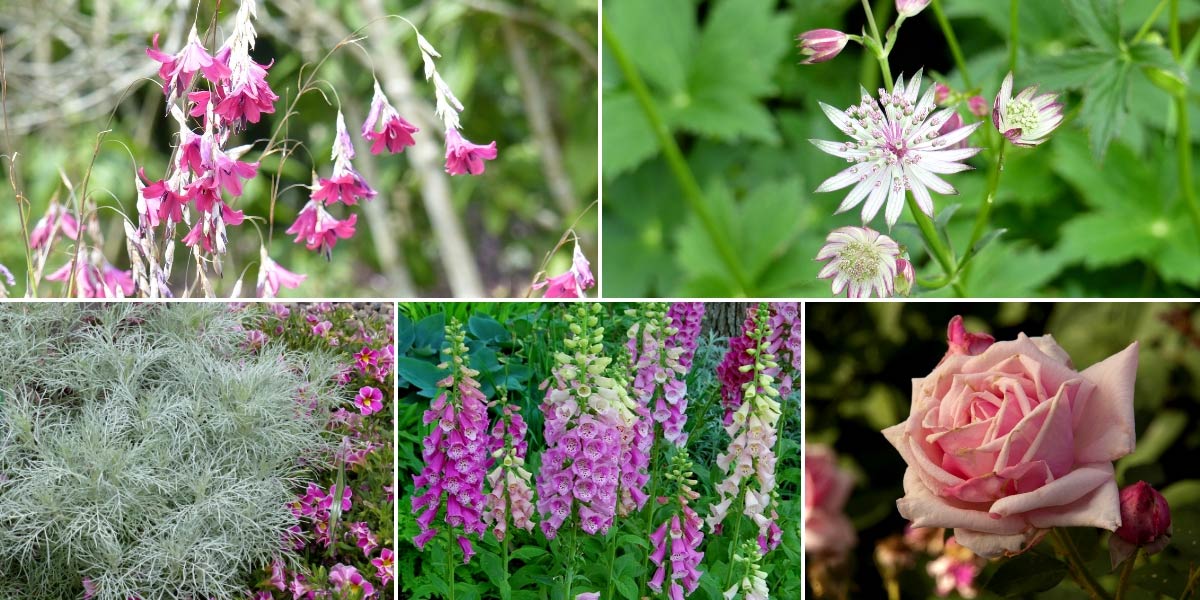
An example pairing for a romantic scene: Dierama pictum, Astrantia major ‘Ruby Star’, Artemisia mauiensis ‘Makana Silver’, Digitalis purpurea ‘Nevadensis’, and old rose ‘La France’
For an always very delicate style, you can plant Dierama in a cottage garden, with Phlox paniculata, Digitalis purpurea, lupins, ferns, agapanthus, penstemons, Salvia nemorosa… Design a lush, abundant garden with plants in shades of blue, mauve, white, and plenty of abundant foliage…
As they appreciate cool to even moist soils, you can plant Dierama near a pond or water feature. Pair them with ferns, lysimachias, meadowsweet, Asian primroses, Gunneras… Also enjoy the elegant blue flowering of Iris laevigata. You will obtain a fresh, green scene with a very natural look, ideal for recharging!
Its very free, airy, light silhouette allows planting in a naturalistic garden. Plant Dierama with Gaura, Veronicastrum, Knautia, agastaches, Echinops, Veronica spicata… And above all, with many grasses: Miscanthus, Panicum, Stipa tenuissima, Pennisetum…! Also favour melliferous plants.
Angel’s fishing rod pairs particularly well with grasses. Its foliage closely resembles that of grasses, and its flowers are as light as the panicles of Panicum or Calamagrostis! These are plants that impress with their elegant, airy, free silhouette.
→ Discover more ideas for pairing Dierama in the garden!
Useful resources
- Discover our range of Dierama
- Our video tips on planting perennials
- Our advice sheet – How to create a beautiful perennial border?
- An article by Virginie on our blog – Summer flowers: the prettiest species and varieties in my garden!
- An article by Ingrid on our blog – Flower border: vary and mix shapes!
Frequent questions
-
Oui — mais simplement et au bon moment. Conseils pratiques : - Après la floraison : supprimez les hampes florales fanées (coupez-les à la base) pour conserver un port net. - En automne ou lorsque le feuillage est complètement desséché : coupez les feuilles et tiges brunes à quelques centimètres du sol, voire au ras du sol. Évitez de tailler tant que le feuillage est encore vert. - Division : tous les 3–4 ans, au printemps ou à l'automne, divisez les touffes si elles deviennent trop serrées. - Hivernage : dans les régions très froides, protégez la souche avec un paillage léger pour éviter les dégâts du gel. - Hygiène : utilisez des outils propres et bien tranchants pour limiter les risques de maladie. En résumé : pas de taille sévère en été — juste un nettoyage des fleurs fanées — et un rabattage net lorsque le feuillage est mortif.
You might be tempted to cut back Dierama clumps in autumn or spring; however Dierama is an evergreen plant and does not require pruning. Doing so would more likely weaken it, slow its growth and delay its next flowering. Better to leave your plant as it is. You can, if necessary, remove any old leaves that have turned brown, dry or damaged.
-
My Dierama isn't flowering! Why?
Dierama is slow-growing. It doesn't like being disturbed, transplanted or divided too often, and may then take several years to flower again. Moreover, if propagated by sowing, expect to wait at least five years before it flowers. Be patient! Also make sure it is planted in a location that suits it, with plenty of sunshine!
- Subscribe!
- Contents
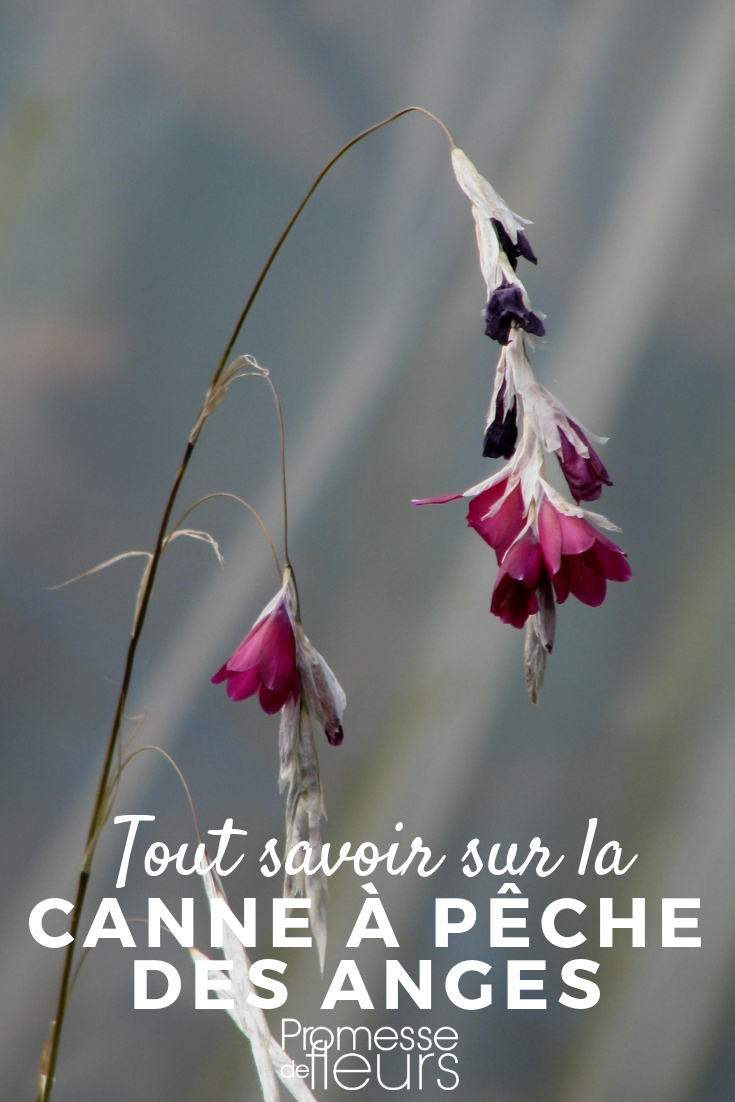































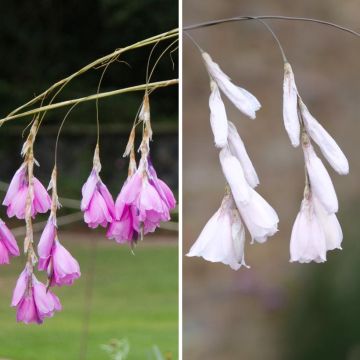



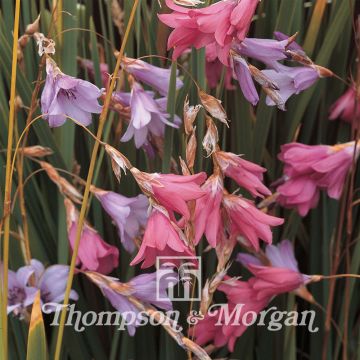
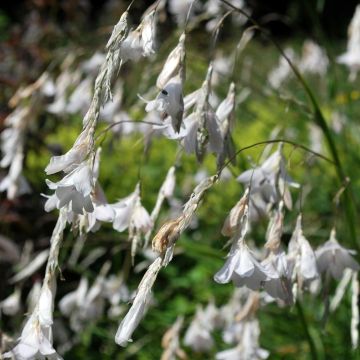
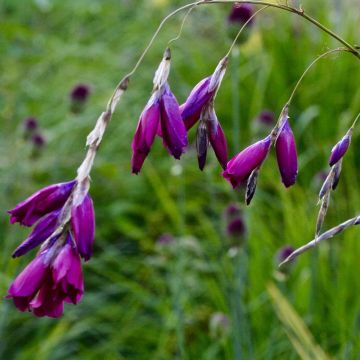



Feedbacks